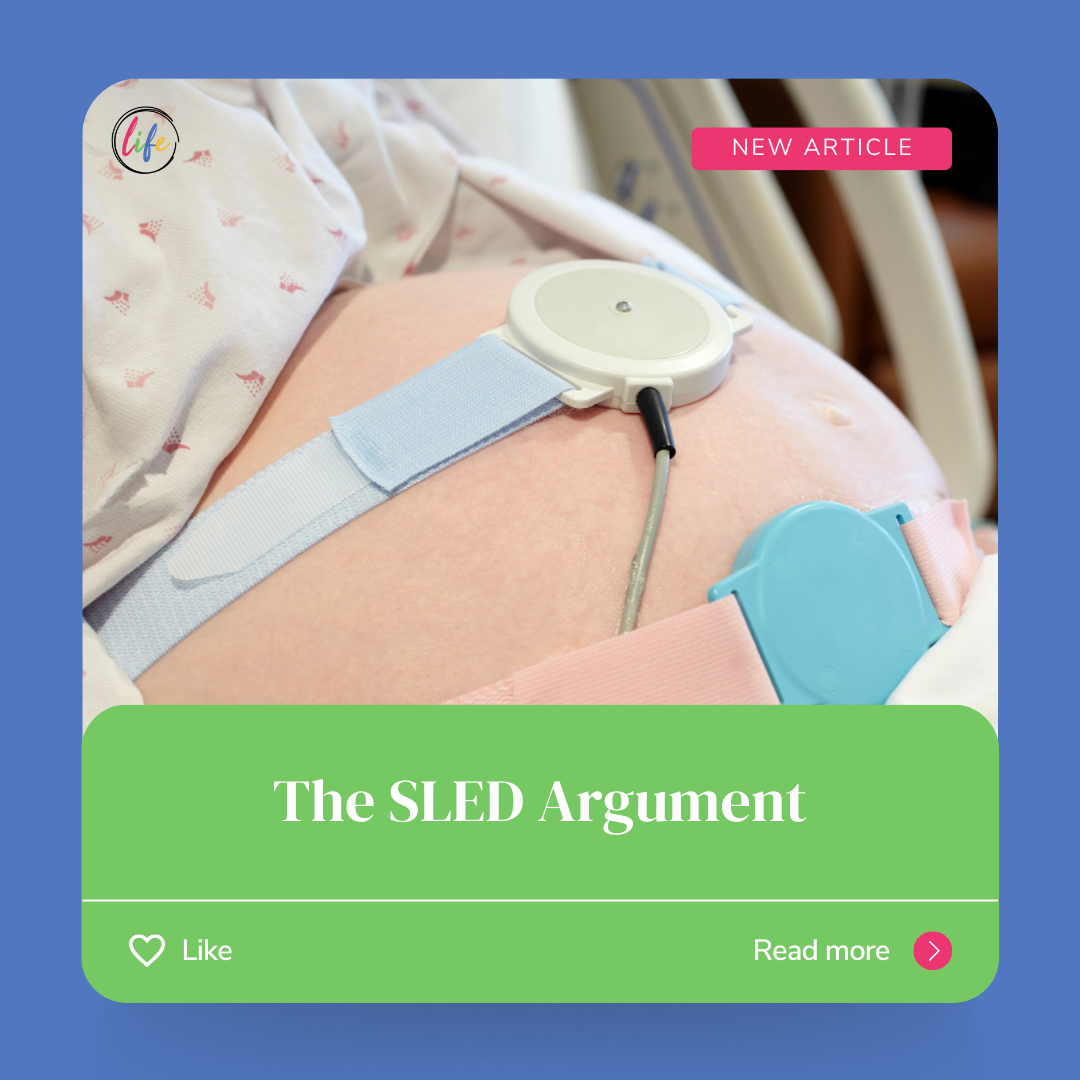
 In their attempts to dehumanize a fetus, choice advocates often refer to its size, level of development, environment, and degree of dependency to support their beliefs. Among life advocates, this is known as the SLED argument. Let’s break down each element of this argument:
In their attempts to dehumanize a fetus, choice advocates often refer to its size, level of development, environment, and degree of dependency to support their beliefs. Among life advocates, this is known as the SLED argument. Let’s break down each element of this argument:
Size
When we talk about fetal rights and abortion, choice advocates often place value on size. They believe that something so small can’t possibly be considered a life, and therefore, is not as valuable as an adult woman.
If size determines value, is it acceptable to harm an infant existing outside the womb? After all, they are much smaller than most others existing outside the womb, like toddlers, teens, and adults.
We do not justify the taking of innocent lives in any other context, so why would we justify the death of an unborn baby that is genetically human from the moment of conception?
Level of development
Choice advocates often assert that unborn babies are not human beings—that they are merely a zygote, blastocyst, embryo, or fetus. However, these are all stages of human development, as the beginning zygote possesses a full 46-chromosome DNA chain (23 chromosomes from its mother and 23 from its father).
“Zygote”, “blastocyst”, “embryo”, and “fetus” are simply scientific terms for those stages of the developing human being—just as later we use terms like “infant”, “toddler”, “preteen”, “adolescent”, “adult”, etc. The terminology does not signify a change in genetic identity. There is nothing new added genetically after conception. Medical textbooks are clear on that point.
Environment
For many choice advocates, location or environment determines a baby’s humanity. They believe that because the unborn baby resides in its mother’s womb and depends on her body for survival, it is not entitled to full human rights, including the right to life itself.
However, there is no genetic difference between a fetus in the womb and a newborn baby outside the womb. The beginning human has all the genetic information it will ever have; its DNA has already determined its sex, hair color, eye color and more. There is no genetic change of identity as the fetus moves through the birth canal to the outside world. Location does not alter genetic identity.
Dependency
Choice advocates insist that an unborn baby is not fully human until it can survive outside the womb—as if the unborn baby does not have value just because it requires time and nourishment to develop. If dependency determines value, then many vulnerable groups would be at a disadvantage.
What about the baby born prematurely who needs artificial support for a period of time? Has that child’s life not begun? What about an older child or adult who experiences a medical emergency or accident that temporarily requires life support? Do we, depending upon our health, go in and out of being “alive” and deemed worthy as humans? If independence is the threshold of life then children would not truly be human until close to adolescence.
DNA is the scientific identifier of life forms–plants, animals and humans. The position of devaluing a category of humans, the unborn, based on size, development, location, or dependency runs counter to science and logic since there is no change in genetic identity.
Learn more about the various stages of fetal development (conception, first, second, and third trimester) and don’t forget to follow us on social media (Facebook, Instagram, and TikTok).